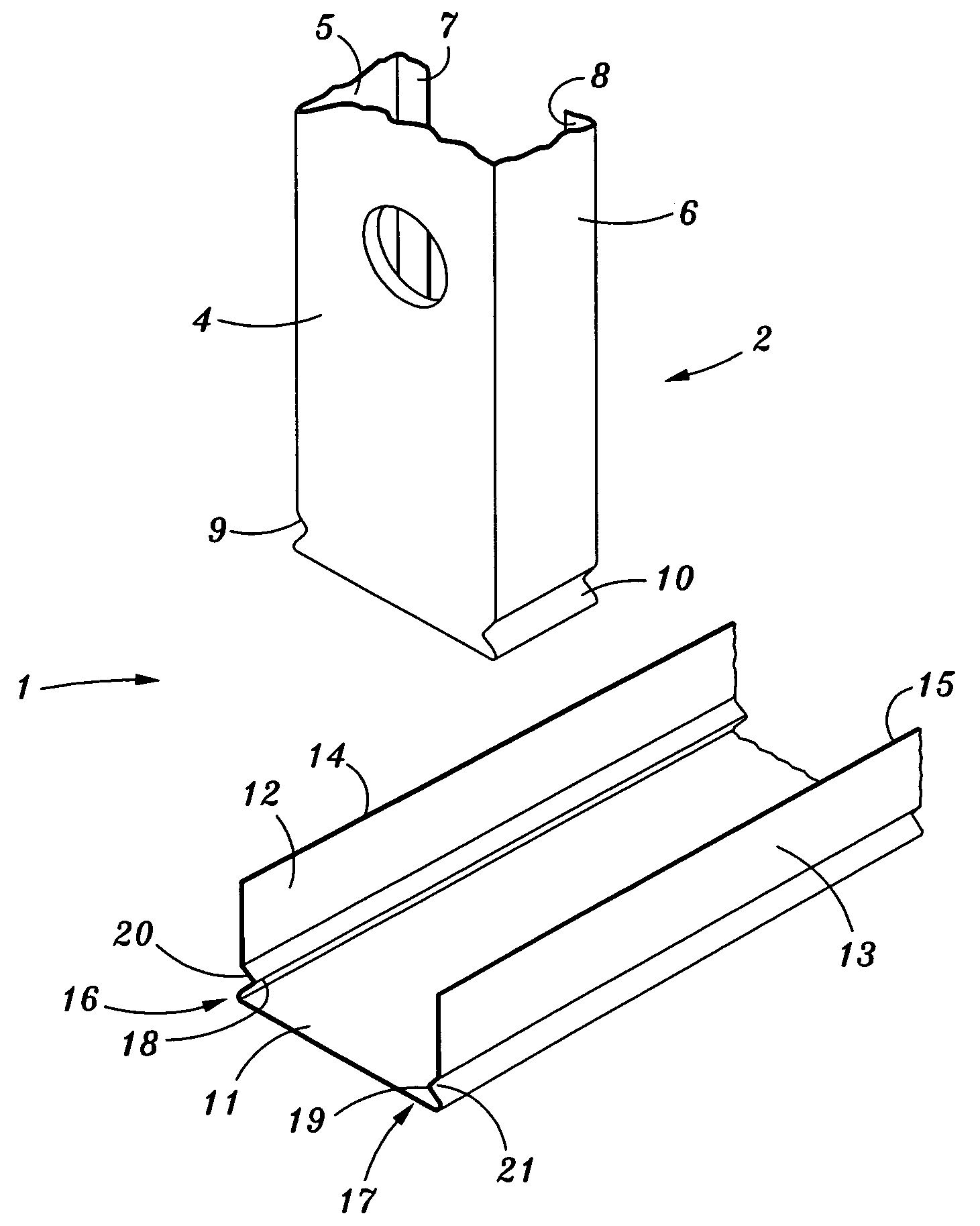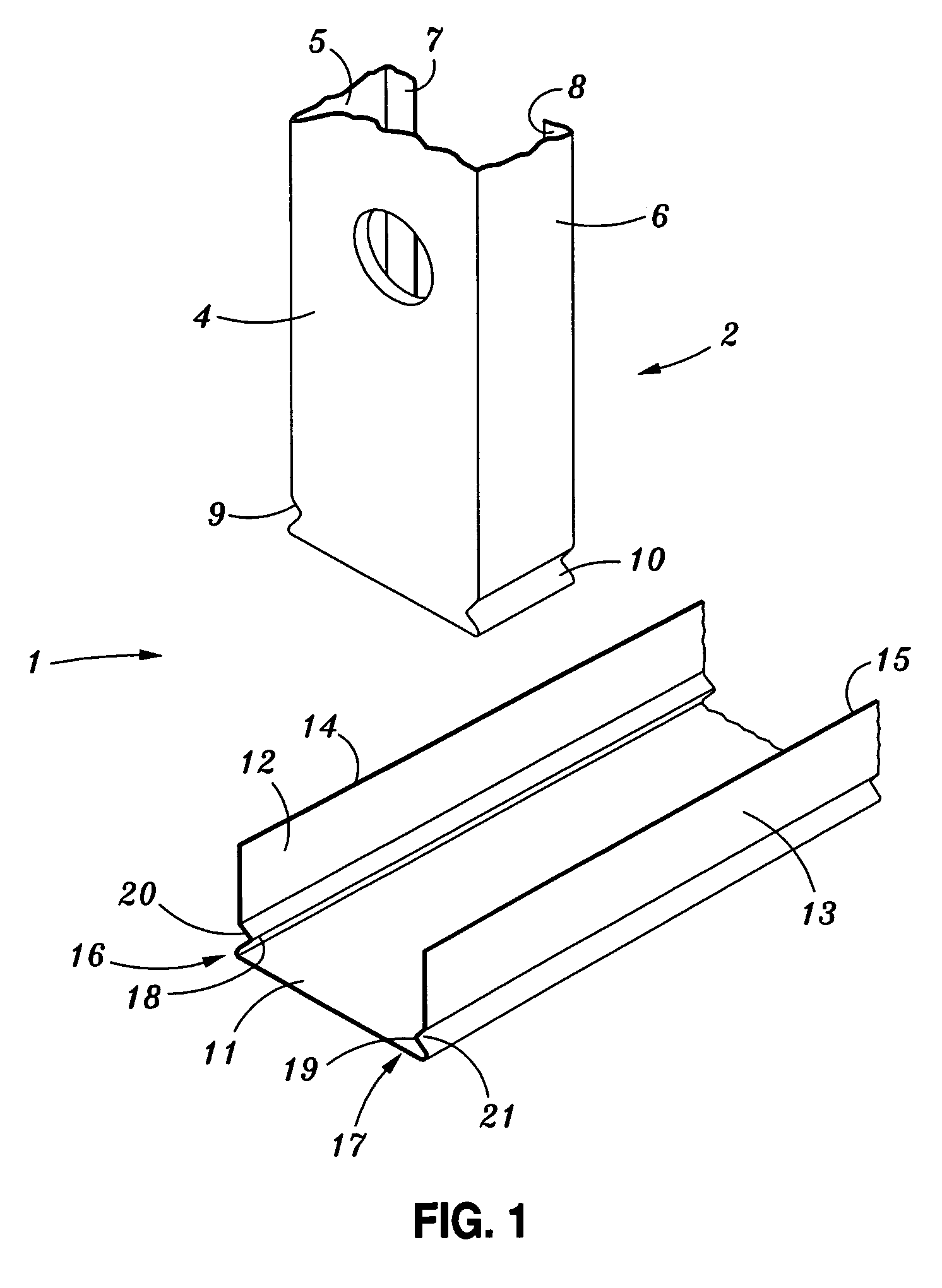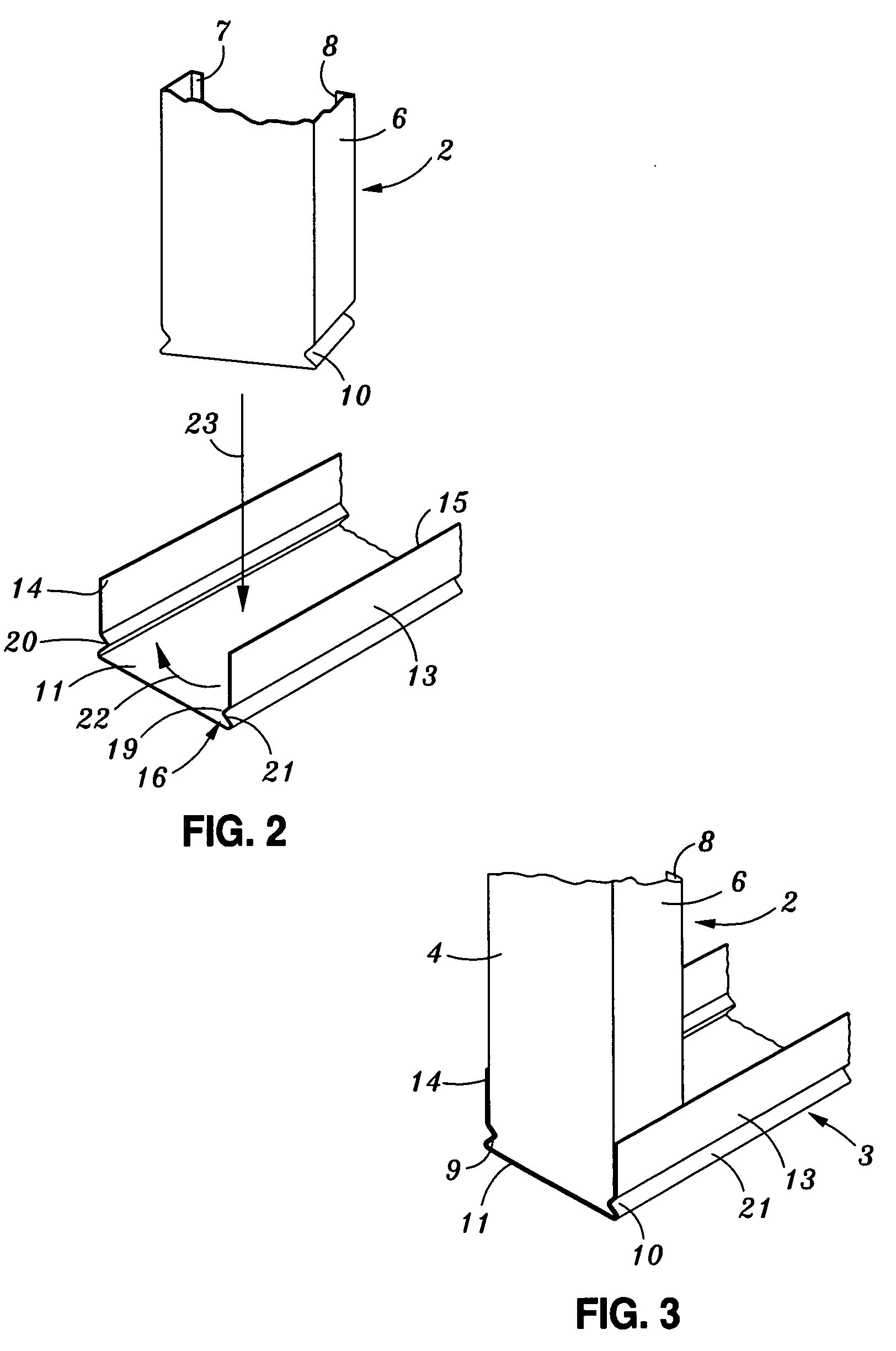Structural members and joining arrangements therefor
a structural member and joining arrangement technology, applied in the direction of couplings, rod connections, manufacturing tools, etc., can solve the problems of weak structural structure of the stud frame, ineffective bracing, and inability to place reliance, so as to improve the structural strength, quick and efficient joining, and quick and efficient and infinite positioning of the stud
- Summary
- Abstract
- Description
- Claims
- Application Information
AI Technical Summary
Benefits of technology
Problems solved by technology
Method used
Image
Examples
Embodiment Construction
[0058]The present invention will not be described according to preferred but non limiting embodiments and with reference to the accompanying illustrations wherein;
[0059]FIG. 1 shows an exploded view of a joining arrangement for two structural members including respective formations in the walls of the members according to a preferred embodiment of the invention;
[0060]FIG. 2 shows a perspective view of respective ends of a typical stud and plate according to one embodiment of the invention prior to engagement.
[0061]FIG. 3 shows an assembled view of the arrangement in FIGS. 1 and 2.
[0062]FIG. 4 shows an elevation view of a typical stud and plate frame according to a preferred embodiment of the invention.
[0063]FIG. 5 shows a perspective view of an engagement between an intermediate stud and bottom plate in the frame of FIG. 4.
[0064]FIG. 6 shows an end view of the arrangment of FIG. 5.
[0065]FIG. 7 shows an isometric view of a telescopic stud member according to a preferred embodiment of...
PUM
 Login to View More
Login to View More Abstract
Description
Claims
Application Information
 Login to View More
Login to View More - R&D
- Intellectual Property
- Life Sciences
- Materials
- Tech Scout
- Unparalleled Data Quality
- Higher Quality Content
- 60% Fewer Hallucinations
Browse by: Latest US Patents, China's latest patents, Technical Efficacy Thesaurus, Application Domain, Technology Topic, Popular Technical Reports.
© 2025 PatSnap. All rights reserved.Legal|Privacy policy|Modern Slavery Act Transparency Statement|Sitemap|About US| Contact US: help@patsnap.com



